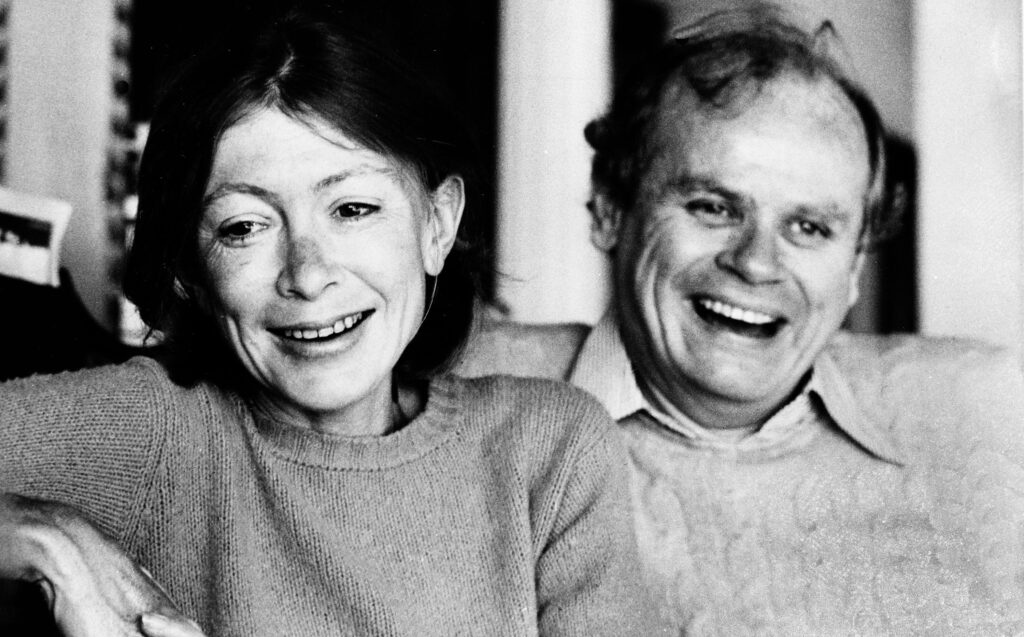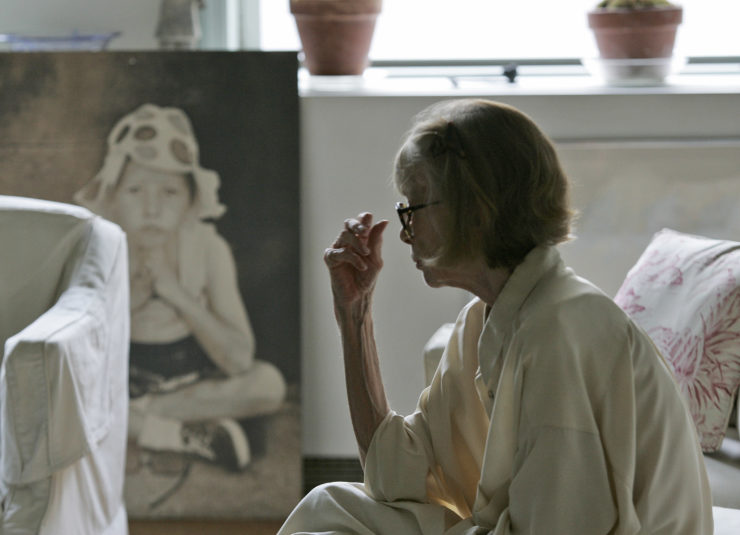In her memoir about the death of her husband, John Gregory Dunne, Joan Didion writes about the night she lost the man who can only be described as her other half. She recalls how a social worker described her to a doctor: “She’s a pretty cool customer.”
This clearly strikes a nerve. "I wondered what an uncool customer would be allowed to do,” she writes in "The Year of Magical Thinking." “Break down? Require sedation? Scream?"
“She was writing through the deeply felt poignancy of someone who could report on grief,” he says. “It’s the hardest thing to write about. She did it as a reporter. She did it as the quote-unquote Joan Didion character of the novels in a true story about grief.”
Didion is not a screamer. She feels things deeply, but on the surface – as a writer and a grieving widow alike – she appears the dispassionate observer.
In other words, a cool customer.
That idea runs through the new Netflix documentary “Joan Didion: The Center Will Not Hold,” directed by her nephew Griffin Dunne. Although it is a loving portrait of this great American writer, it isn’t sentimental, repeatedly acknowledging what Didion called “the cool-customer effect.”
In a scene that has drawn a lot of attention, Dunne asks her about the moment she met a little girl tripping on acid back in “Summer of Love” San Francisco.
First he includes touching footage of Didion talking about missing her little daughter, Quintana, while she was away on assignment reporting on the counterculture movement. Then he asks her how she felt as a journalist when she saw the 5-year-old girl under the influence of LSD.
“Well it was…” And then there is a full 10-second pause, her surprisingly expressive hands seeming to articulate her struggle to admit what comes next. “Let me tell you, it was gold. The long and the short of it is, you live for moments like that if you’re doing a piece, good or bad.”
What’s the famous line from Didion? “Writers are always selling somebody out.”
In another scene, she reads from an essay that was included in her book “The White Album.”
“I’m sitting in a high-ceilinged room in the Royal Hawaiian Hotel watching the long translucent curtains billow in the trade wind and trying to put my life back together. My husband is here, and our daughter, aged 3. … We are here on this island in the middle of the Pacific in lieu of filing for divorce.”
Dunne asks, “Did he read that?” Her answer is quick: “He edited it.”
“We thought generally that you used your material,” she says. “You wrote what you had. And that was what I happened to have at that moment.”
Her ability to use painful material with a seemingly dispassionate eye chills, but at heart that is what a reporter does. We just don’t usually see someone, especially a frail octogenarian (and oh, she looks so frail), admit it so freely.
Even in grief, she is a reporter. In the film, the writer Hilton Als talks about this detachment, praising her strength and talent.
“She was writing through the deeply felt poignancy of someone who could report on grief,” he says. “It’s the hardest thing to write about. She did it as a reporter. She did it as the quote-unquote Joan Didion character of the novels in a true story about grief.”

In another scene, Als talks about her novel “Play It as It Lays” and the narrator, Maria, who bears more than a passing resemblance to Didion. “Maria is detached in the way that a reporter is detached,” he says. “’Play It as It Lays’ is about what Maria sees and what she feels. Which is, trying not to feel.”
It made me think of a myth-dismantling Vanity Fair profile of Didion by Lili Anolik. It ran last year, but I reread it again this week. Anolik says of Didion’s writing in “Play It as It Lays”:
“Her eye is eerily close to that of a camera’s: all-seeing yet uncaring, a mode of perception both alienated and alienating.”
That profile captured the “cool-customer effect” with a brutally wonderful comparison to Andy Warhol:
"We thought generally that you used your material. You wrote what you had. And that was what I happened to have at that moment.”
“Like Warhol, “Didion” presents herself as an observer—no, a witness—to unspeakable acts. In fact, “Death and Disaster,” Warhol’s early-60s series depicting all manner of grisliness—car accidents, riots, suicides—could have been the title of Slouching, and maybe a better one. (The Yeats reference, in retrospect, seems a little alarmist.) “Didion” is absorbed, intensely, in what’s going on around her, but is not involved; her gaze fixed, even salivating, yet also vacant. Her motto might be: See everything, hear everything, do nothing. Still, her nothing is something, her extreme passivity a form of extreme aggression. She takes events, people, places that inspire violent and chaotic feelings—passion, hope, terror, despair—and subdues them, controls them, counteracting their awesome power simply by looking at them in a certain way. Her look, Warhol’s look, too—it’s aestheticizing, providing a psychic distance, a paradoxical kind of a cool. A burned-out cool. A cool that gives off heat.”
In another scene from the documentary, the writer Susannah Moore talks about living for a while in the glam Didion-Dunne home in Hollywood. She describes how Didion would come down late in the morning, wearing sunglasses, silent, and drink a cold Coca-Cola. The moments would pass, she says, “neither of us speaking.”
But there is a moment in the film where Didion’s reserve, her detachment, breaks down. I think it’s my favorite (perhaps because I’m not a cool customer).
In it, she’s talking about the first time she saw the baby she would adopt, and then lose not long after her husband’s death, a horrible echoing trauma.
“There was no question but this baby was going to be ours,” she says of Quintana.
It’s a moment of true emotion. You can see her throat constrict, like she’s holding back tears. Then she casts her eyes down, as if they reveal too much.
Yes, Didion is a cool customer, the kind of person who wears sunglasses while drinking a Coke at breakfast. But what those sunglasses conceal.



